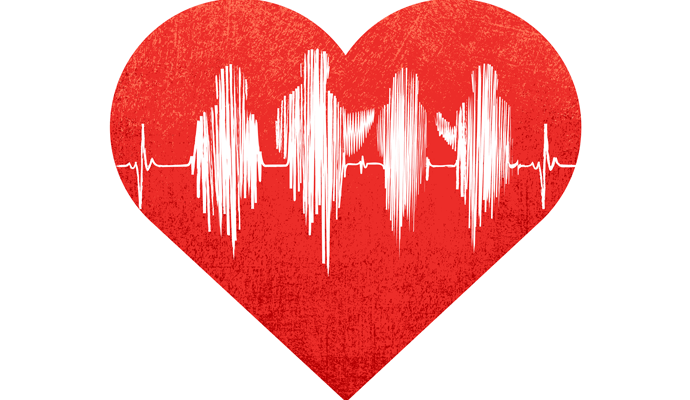Empowerment will be at the heart of the new healthcare experience
COVID-19 has highlighted the importance of keeping patients, families, and caregivers informed and connected, and of valuing them as co-creators in building the future of healthcare delivery.
Healthcare is never one-size-fits-all, and COVID-19 has brought this fact into sharp relief. A 65-year-old diabetic woman, a healthy 40-year-old man, a pregnant woman, and an elementary school student all take on a different level of personal risk every time they step outside. Each individual handles the mental toll of this prolonged pandemic differently, too. And those who live alone struggle with their health needs in different ways than those who live with others and in multigenerational households.
But some common needs unite all types of patients, no matter the circumstances. Everyone needs access to timely, accurate information and a better understanding of the care options they have. Everyone needs a safe, easy way to see doctors and monitor chronic conditions. People need greater control over their own care. They need to be able to take responsibility for the management of their health and well-being. And everyone — including care providers — needs to have their voice heard so they can function as co-creators in the healthcare experience. In short, patients, families, and healthcare professionals need to be empowered.
Everyone needs timely, accurate information. Everyone needs a safe, easy way to see doctors and monitor chronic conditions. And everyone — including care providers — needs to have their voice heard.
Achieving empowerment will require greater communication between and among the patient, family caregivers, and providers. It will also require an acute understanding and consideration of how social determinants of health — such as where people live and their access to nutritious food, transportation, quality housing, and healthcare — affect specific individuals and cohort groups.
These needs didn’t originate with COVID-19, nor will they disappear once we’ve put the virus behind us. The urgent dynamics of the pandemic, however, have forced healthcare organizations to refocus and adapt in various ways that will help increase empowerment. Here are three areas where progress is already being made and where further developments could revolutionize the healthcare experience.
Innovating new technologies
The move to virtual delivery during the pandemic has advanced the adoption of some of the technological innovations that had already started transforming the healthcare experience. Telemedicine, for example, has been around for a couple of decades, but the pandemic has made it commonplace. Remote monitoring of blood pressure, oxygen saturation levels, blood sugar readings, cardiac rhythms, and much more is now common. Long before the pandemic, apps that connect patients to medical expertise had been in development, and they continue to crop up. ResAppDx, developed by physicians at Massachusetts General Hospital, diagnoses acute respiratory disease in children by analyzing how their coughs sound. Another app, called i-Prognosis, coordinated by the Aristotle University of Thessaloniki, Greece, tracks a variety of biological cues that, when added together, can signal the onset of Parkinson’s disease. And Instant Heart Rate, developed by researchers in Canada, analyzes blood flow in the tip of a person’s index finger to indicate artery health. All of these technologies make it easier for patients and caregivers to proactively monitor their health, building a sense of empowerment.
Wearable health devices are another fast-growing and empowering technology. Canadian company Myant is pioneering connected apparel that features sensors and actuators knitted directly into everyday clothing. The company is partnering with leading technology and healthcare companies, such as Mayo Clinic and Carlisle Interconnect Technologies, to test and perfect its solutions. VitalConnect, a Silicon Valley–based company, has also been on the cutting edge of digital monitoring with devices such as a monitoring patch that continuously streams 11 vital signs using telehealth-enabled software and another patch, approved by the U.S. Food and Drug Administration, for monitoring COVID-19 patients.
The data from these sorts of devices can empower not only patients but employers and caregivers. For example, new predictive models used in some parts of the world employ artificial intelligence (AI) to analyze data related to the well-being of an entire organization’s workforce, forecasting when an individual might become diabetic or develop other serious complications five, 10, or even 15 years in the future, and enabling early intervention.
Including the entire household and social factors in the patient experience
Healthcare, especially among households sheltering in place, can be a family affair. Many patients rely on relatives, both inside and outside of their home, to help them coordinate care. Family members might be called on to administer medication, work with apps and other technology that the patient isn’t familiar with, translate information, schedule appointments, and support care in other ways. A healthcare experience that empowers not just the patient but the entire household or support system is therefore necessary.
And there are other reasons aside from the purely practical aspects of shared responsibility for care that might make patients’ home situations relevant to their health. Social determinants of health have a significant impact on well-being. For example, a faith-based health system in the midwestern United States is working with a Fortune 500 technology company to factor social determinants of health into determining the likelihood that certain patients discharged from the hospital will be readmitted. These societal influences can help answer basic questions such as:
- Can the patient adhere to what he or she is being asked to do?
- Does the patient live alone or does he or she have a live-in or external support system?
- Is the patient within walking distance of a gym?
- Does the patient have access to healthy food?
Historically, healthcare systems have lacked this context, limiting the effectiveness of the patient experience.
Empowering caregivers to attend to the needs of not only patients but themselves is also important. St. Elizabeth Health Care, in Toronto, created the website elizzbot, a self-described “lifestyle destination that inspires daughters and sons to live well while caring for their aging parents.” The interactive, confidential site provides on-demand, unbiased emotional support, including a chat feature, and resources — such as psychotherapy techniques, self-learning AI, and a journal — that caregivers can use to boost their mood and build resilience and self-awareness.
The Social Care Institute for Excellence in the U.K. has created an online guide for those who are supporting adults and children with learning disabilities or autism during COVID-19. The guide provides tips and facts for all aspects of the patient and caregiver journey during the pandemic.
Co-creating the new healthcare experience
Experience design teams are learning that small tweaks in the patient journey can provide benefits to one party while creating problems for another. Bringing everyone to the table — patients, families, caregivers, partner organizations, community resources, local and national governmental agencies, and advocates — during redesign brainstorming and implementation assures a greater opportunity for success and helps to prevent costly mistakes and do-overs.
Co-creation with key stakeholders and partner organizations is at the heart of the patient experience designed for the Ministry of Health in New South Wales, Australia. Patients were invited to offer feedback on pain points, such as accessing the online patient interface system, working within the system to make or cancel appointments, scheduling procedures, and obtaining clear and easy-to-understand post-discharge care information. And then, solutions were implemented in response, such as proactive reminders and delivery of the right information to the patient at the right time.
Another example of a co-created experience is a project in the works in Italy related to a woman’s pregnancy journey. This effort is a collaboration between experience designers, healthcare institutions, and pregnant women, together with their physicians and midwives.
At the beginning of her pregnancy, a woman in Italy today must complete a set of paper forms and submit them to her local health office. The forms, specific to the area in which she lives, are scanned and shared with those involved in her care. If she decides to change physicians for any reason or move out of the area, she must start all over to create a new paper record.
The new digital pregnancy journey eliminates the system’s reliance on paper forms, makes transfer and sharing of records easy, and creates a real-time log of the woman’s condition and health needs so she and her caregivers can access critical information. Development of this digital system relied heavily on input from patients and caregivers about usability.
Just the beginning of a dynamic healthcare experience
The pregnancy journey is a promising example of how the empowering healthcare tools that are being developed today might shape the future of the patient and caregiver experience. After a baby is born, the journey continues, after all. Health systems that can evaluate a mother’s online search history, for example, or call up her and her child’s previously recorded health records, could send push notifications to the mother’s mobile phone, reminding her of any tests or health interventions her child might need or alerting her to discounts available on products or services that might be helpful to her.
One day, data analytics could track environmental conditions and match them to individual health issues. So, for instance, a person with asthma who is a runner could be alerted to poor air quality along her route on a certain day.
These scenarios aren’t some far-fetched vision of the future; they are very clearly possible when considered together with the advances we are seeing every day in all three of the critical areas we’ve covered — technological innovation, whole-household solutions, and co-creation. And in all cases, it will be the empowerment of patients, families, and healthcare providers that will ensure our world’s collective safety and health.
PwC Italy senior manager Tommaso Nervegna and PwC Australia partner Diane Rutter also contributed to this article.








